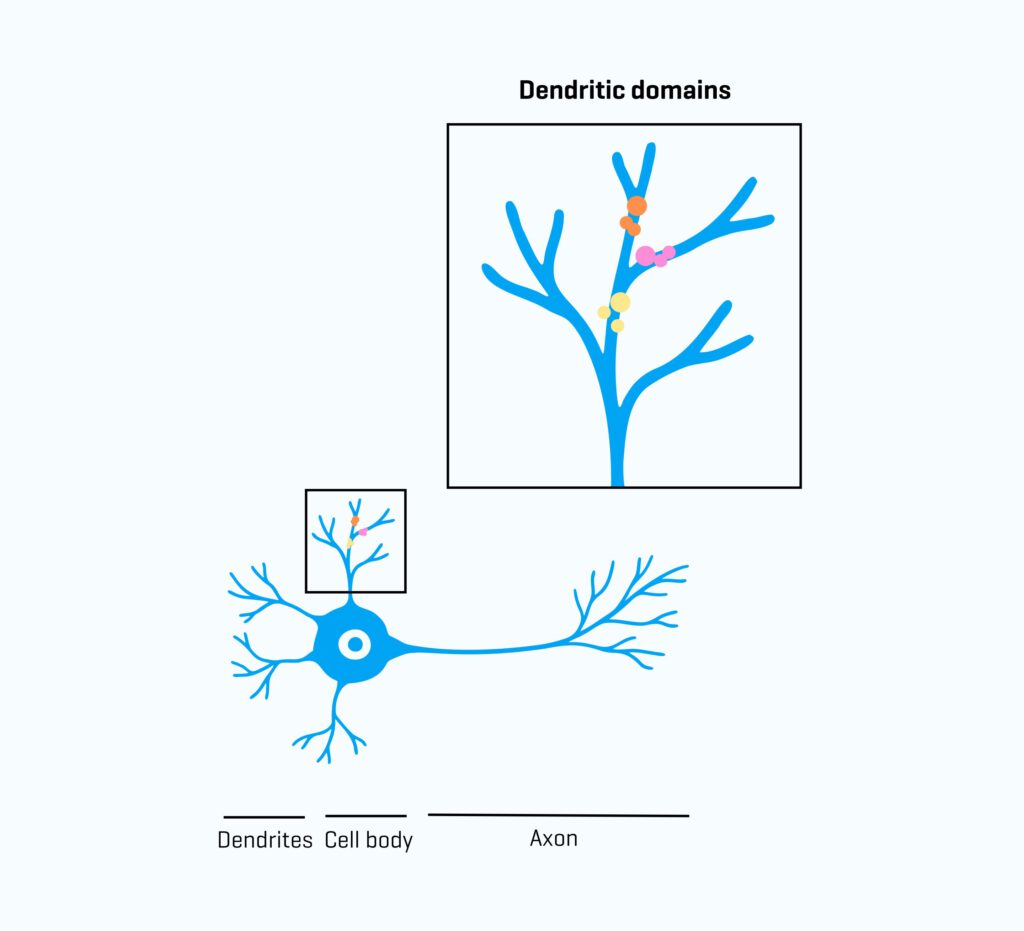Figure Dendritic regions. Courtesy of the Netherlands Neuroscience Institute.
A new mouse study from the Netherlands Institute of Neuroscience (NIN) reveals that neurons build “mini-computers” during early childhood to boost the brain’s computational power. The study is published in the journal eLife.
Building a functional brain requires wiring neural circuits with high specificity. Key to this system are branched extensions of neurons called dendrites, which process and integrate information they receive from other neurons.
Previously, computational neuroscientists have proposed that dendrites could compute information locally in many separate segments within a single cell. Such “computational subunits” or “mini-computers” would dramatically increase the computational power of neurons. However, it remains unclear how neurons wire up these mini-computers in the developing biological brain.
But what if we could actually observe the development of these subunits? In a new study from Christian Roman’s group, researchers looked at computational subunits in the developing brains of young mice. They found that dendrites, the communication points within synapses, are indeed clustered together according to the information they convey. In other words, neighboring synapses that convey similar information are clustered together in dendritic regions.
Infographic dendritic areas. Credit: Netherlands Neuroscience Institute – Eline Feenstra
Live Recording
Christian Roman says: “We made this discovery by recording time-lapse videos from the dendrites of individual neurons in the cortex of living mice. Interestingly, this classification takes place already before the mice open their eyes, i.e. before they receive any visual information. Here, we demonstrate that neighboring synapses are frequently co-active. The further the synapses are from each other, the less co-active they are. This spontaneous activity – activity that the brain generates before the eyes open – seems to be sufficient to classify synapses into domains and thus probably to establish computational subunits.”
But why is this important? This research could explain why certain errors in development lead to neurodevelopmental disorders. “To investigate this further, we want to look at mouse models of neurodevelopmental disorders to see if synaptic sorting is absent or altered. This would support the idea that successful sorting of synapses along dendrites is necessary for healthy brain development,” says Roman.
The answer to this question will help us to better understand how the brain develops and how errors during development affect the brain’s computational capabilities. It may also provide new ideas for designing biologically inspired artificial neuronal networks for advanced information processing. Roman concludes: “What’s most interesting to me is how specifically the neurons are connected and how quickly this is possible without knowing anything about the outside world. It’s amazing that the brain can do this.”
Further information: Alexandra H Leighton et al. “Clustered synapses develop in distinct dendritic regions of visual cortex before eyes open,” eLife (2024). DOI: 10.7554/eLife.93498.3
Journal information: eLife
Courtesy of the Netherlands Institute for Neuroscience (KNAW)
Citation: How Developing Neurons Can Build “Mini Computers” to Boost Computing Power (July 22, 2024) Retrieved July 22, 2024 from https://medicalxpress.com/news/2024-07-neurons-mini-power.html
This document is subject to copyright. It may not be reproduced without written permission, except for fair dealing for the purposes of personal study or research. The content is provided for informational purposes only.

